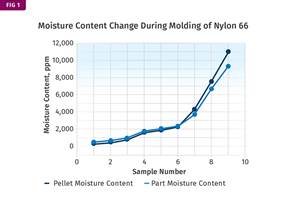New Polysulfone Player in North America
Chinese producer of polysulfone teams up with North American plastics distributor to help alleviate supply crunch.
Demand for materials with higher heat resistance has been fast growing across the engineering resins industry, and in some cases outpacing supply. Among the key drivers are thinner and more complex consumer electronics, uniquely branded automotive headlamps, and lightweighting within the aerospace industry.
Polysulfone (PSU) polymers appear to be the latest such supply crunch example, driven by annual growth rates of 5-7% in North America, along with limited capacity expansion by the major producers. For example, global leaders in this arena BASF and Solvay have moved standard lead-times out between 20-30 weeks on their polysulfone products. Supply constraints, in some instances, have been so tight that converters and OEMs have had to turn down orders for their molded products or have had to opt for the more expensive polyphenylsulfone (PPSU).
But help is underway. China’s UJU New Materials Co. Ltd. (U.S. office in Manhattan, N.Y.), has been making a mark on the global scene with its Paryls brand of PSU and PPSU, and expects to commercialize polyethersulfone (PES) before year’s end. Moreover, the company has signed an exclusive North American distributor and importer agreement for all these resins with Conventus Polymers, LLC, Parsippany, N.J. The latter is a North American thermoplastics distributor and technical sales agency.
Conventus President and Owner John Jorgensen III, feels the timing is just right. “We have a great opportunity to help customer, both those with immediate needs and those interested in long-term risk mitigation. Our goal is to work with customers who have a genuine interest in a nimble supplier with robust quality, competitive prices, and the ability to supply in a reasonable timeframe. Customer feedback and acceptance has been even better than expected,” he said.
According to Steven Xu, v.p. of sales and marketing, UJU North America, the company’s Paryls F3150 PSU grade processes very similarly to Solvay’s Udel P-1700 PSU. In addition, their Paryls F1350 PPSU reportedly offers better flow than either Solvay’s Radel-R-5800 PPSU or BASF’s Ultrason P3010. “We patiently waited to enter North America until we had received important regulatory approvals such as NSF, FDA, ISO10993, and many others. We are confident our product performs equally or better to many of the common grades being used today.” Conventus now stocks both Paryls grades in North America. UJU also has the capability to custom color their product via their North American office as they are now working with select custom compounders.
In December of 2014, we reported on the emergence of the global shortage for SABIC’s Ultem PEI (polyetherimide), which lasted through nearly the end of 2015. As we reported then, molders and OEMs had to manage risks such as long lead-times and supply disruptions. As a result, some savvy compounders moved to address the issue by offering thermoplastics compounds that serve as viable alternatives. One example is RTP Company, which has been offering a range of compounds including amorphous materials based on polysulfone or semicrystalline materials that have been modified, alloyed, and/or reinforced to achieve very similar physical properties to PEI. It will be interesting to see what other new versions of high-heat compounds or alloys emerge as a result of the high demand and supply constraints.
Search for more polysulfone resins in PT’s materials database.
Related Content
Volume Resin Prices Move in Different Directions
PE, PP, PVC, and ABS prices slump, while PS, PET, PC, and nylons 6 and 66 prices rise.
Read MoreWhat's the Allowable Moisture Content in Nylons? It Depends: Part 2
Operating within guidelines from material suppliers can produce levels of polymer degradation. Get around it with better control over either the temperature of the melt or the barrel residence time.
Read MoreThe Fantasy and Reality of Raw Material Shelf Life: Part 1
Is a two-year-old hygroscopic resin kept in its original packaging still useful? Let’s try to answer that question and clear up some misconceptions.
Read MoreScaling Up Sustainable Solutions for Fiber Reinforced Composite Materials
Oak Ridge National Laboratory's Sustainable Manufacturing Technologies Group helps industrial partners tackle the sustainability challenges presented by fiber-reinforced composite materials.
Read MoreRead Next
Global PEI Shortage To Last Until Second Half Of 2015
With SABIC's Ultem PEI supply tightness expected to continue, RTP is hosting a webinar to discuss alternative compounds it is offering.
Read MoreBeyond Prototypes: 8 Ways the Plastics Industry Is Using 3D Printing
Plastics processors are finding applications for 3D printing around the plant and across the supply chain. Here are 8 examples to look for at NPE 2024.
Read MoreMaking the Circular Economy a Reality
Driven by brand owner demands and new worldwide legislation, the entire supply chain is working toward the shift to circularity, with some evidence the circular economy has already begun.
Read More










 (2).jpg;maxWidth=300;quality=90)














